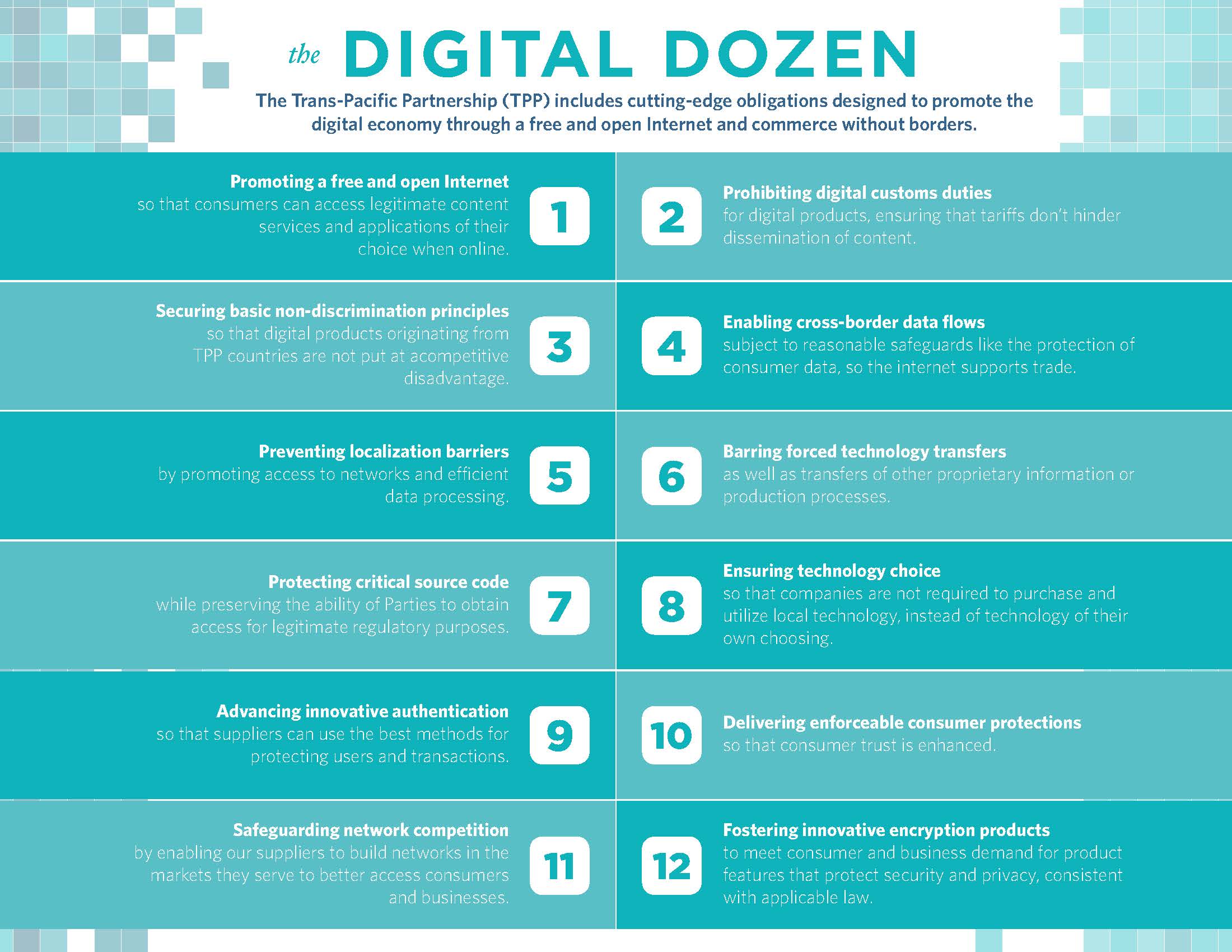The Semiconductor Seven: SIA’s Top Trade Priorities
Wednesday, Mar 09, 2016, 9:30pm
by Semiconductor Industry Association
President Obama released his 2016 Trade Policy Agenda on March 2. This thick document includes a raft of trade priorities for this Administration, including major trade agreements either under negotiation or completed: Trans-Pacific Partnership (TPP), Transatlantic Trade and Investment Partnership (TTIP), Environmental Goods Agreement (EGA), Trade in Services Agreement (TiSA), and expansion of the Information Technology Agreement (ITA).

With 82 percent of the U.S. semiconductor industry’s customers residing outside the United States, all these agreements are critical to us as they are central to opening markets around the world.
A cornerstone of the President’s trade agenda is protecting and strengthening the digital economy. The Trade Policy Agenda itself outlines the “Digital Dozen” – 12 disciplines nicely woven into the TPP to strengthen digital trade and combat the rising trend of digital nationalism that threatens the digital economy. These rules [click image to the right to enlarge], which focus on the free, non-discriminatory, and open trade of digital goods, overlap significantly with SIA’s core trade priorities.
This is no surprise, as semiconductors are the foundation of the digital economy. Following the model of the “Digital Dozen,” we have developed our own “Semiconductor Seven” – SIA’s top trade priorities we believe are central to America’s trade agenda:
1. Ensure access to global markets for the most innovative and effective encryption products
Prevent countries from taking actions that block or place discriminatory restrictions on commercial foreign products with encryption, or that block companies from using the strongest available security technologies in the marketplace.
2. Strengthen safeguards and increase penalties to protect trade secrets and other forms of IP
Trade secrets are a critical and major asset of U.S. semiconductor companies. Requirements for criminal penalties for trade secret theft, including via means of cyber theft, and strengthened procedures to protect trade secrets during conformity assessment procedures are a priority for the U.S. semiconductor industry.
3. Ensure that state-owned enterprises (SOEs) compete fairly and transparently based on market considerations and without undue government advantage
SOE activity guided or aided by government influence, rather than by commercial considerations, can cause harmful market and investment distortions. SOE disciplines should be strengthened to ensure SOEs and regulatory authorities act in a non-discriminatory and market-driven manner in terms of commercial purchases and sales, investment decisions, investment requirements, and application of regulatory authority.
4. Prevent forced localization of digital infrastructure and local content requirements
Preventing trading partners from requiring companies to build technology infrastructure in their market or requiring companies to purchase or use local technology will help ensure data efficiency, cost efficiency, global interoperability and technology choice.
5. Thwart forced technology transfer
Rules prohibiting partners from requiring companies to transfer their technology, production processes, or other proprietary information such as source code (often as a condition of market access) will help prevent unhelpful distortions generated by such non-market driven behavior and the unauthorized disclosure or theft of IP.
6. Eliminate duties on semiconductor-rich products and applications (i.e. autos/auto parts)
Lower consumer prices and lower costs of trade for semiconductor-enabled products such autos, auto parts, consumer electronics, motors and industrial machinery, health-care devices will promote innovation and growth.
7. Simplify and harmonize customs and trade procedures
The semiconductor value chain and supporting activities comprising the semiconductor ecosystem (i.e. raw materials, manufacturing equipment, research, design, fabrication, assembly, packaging and testing, distribution) is spread across the globe involving more than 100 countries. Simplifying and making more consistent customs procedures around the world will speed up time to market, lower costs, and lighten the regulatory burden of semiconductor companies with complex and global supply chains.
The “Semiconductor Seven” are embedded throughout the TPP and the ITA and we anticipate relevant pieces of the seven will make their way into the EGA, TTIP and TiSA. Advancing these important trade priorities will help strengthen our industry and the American economy.